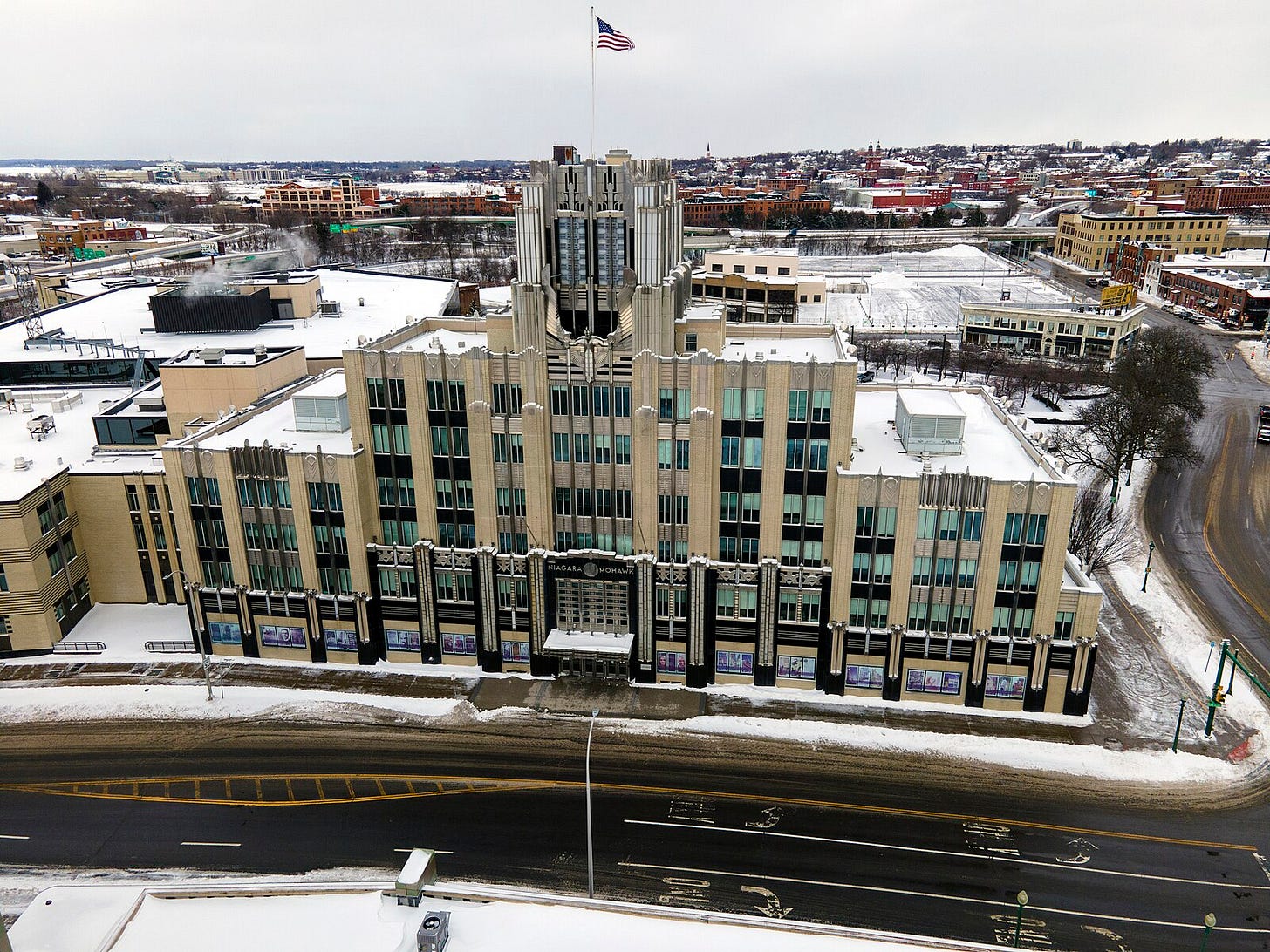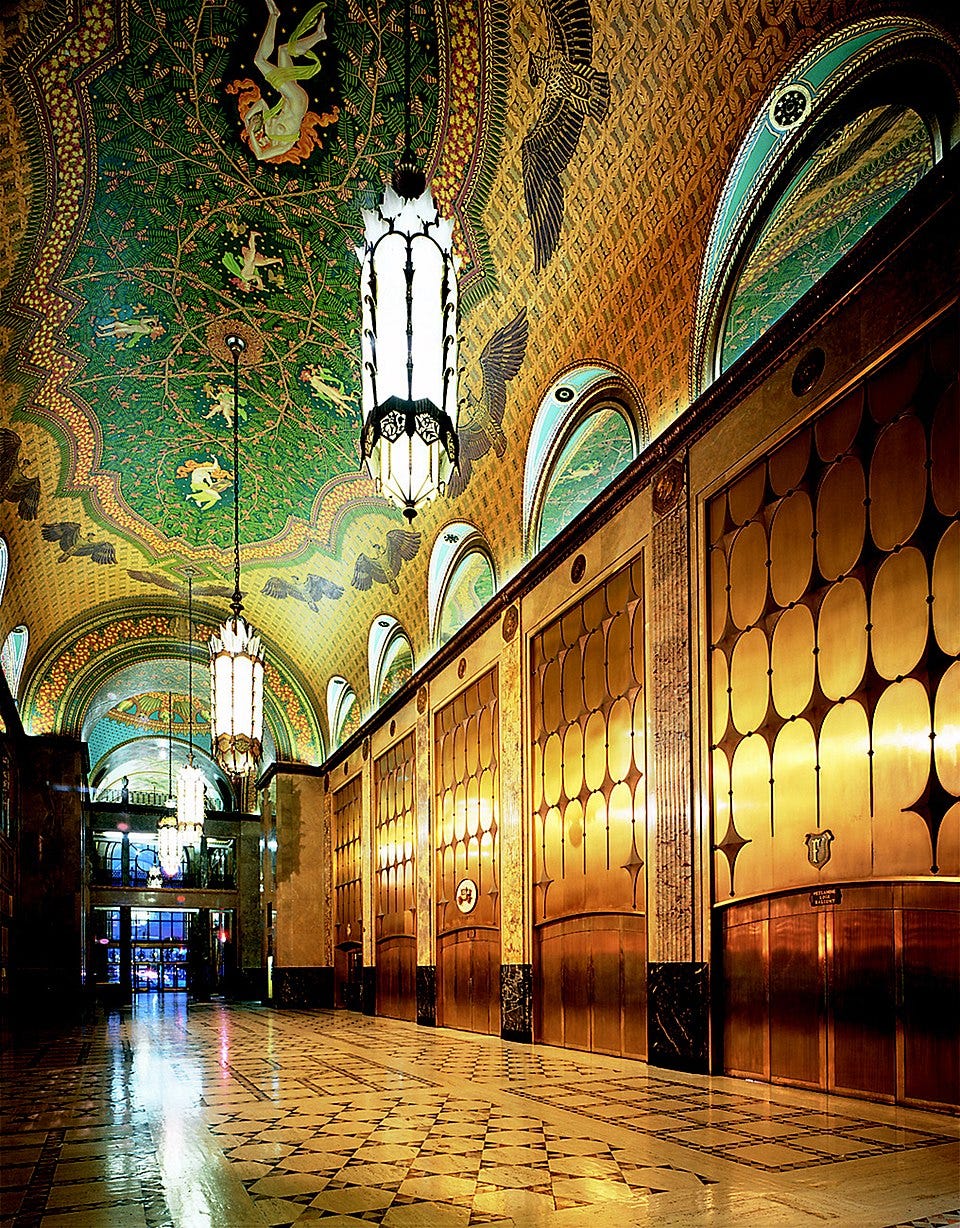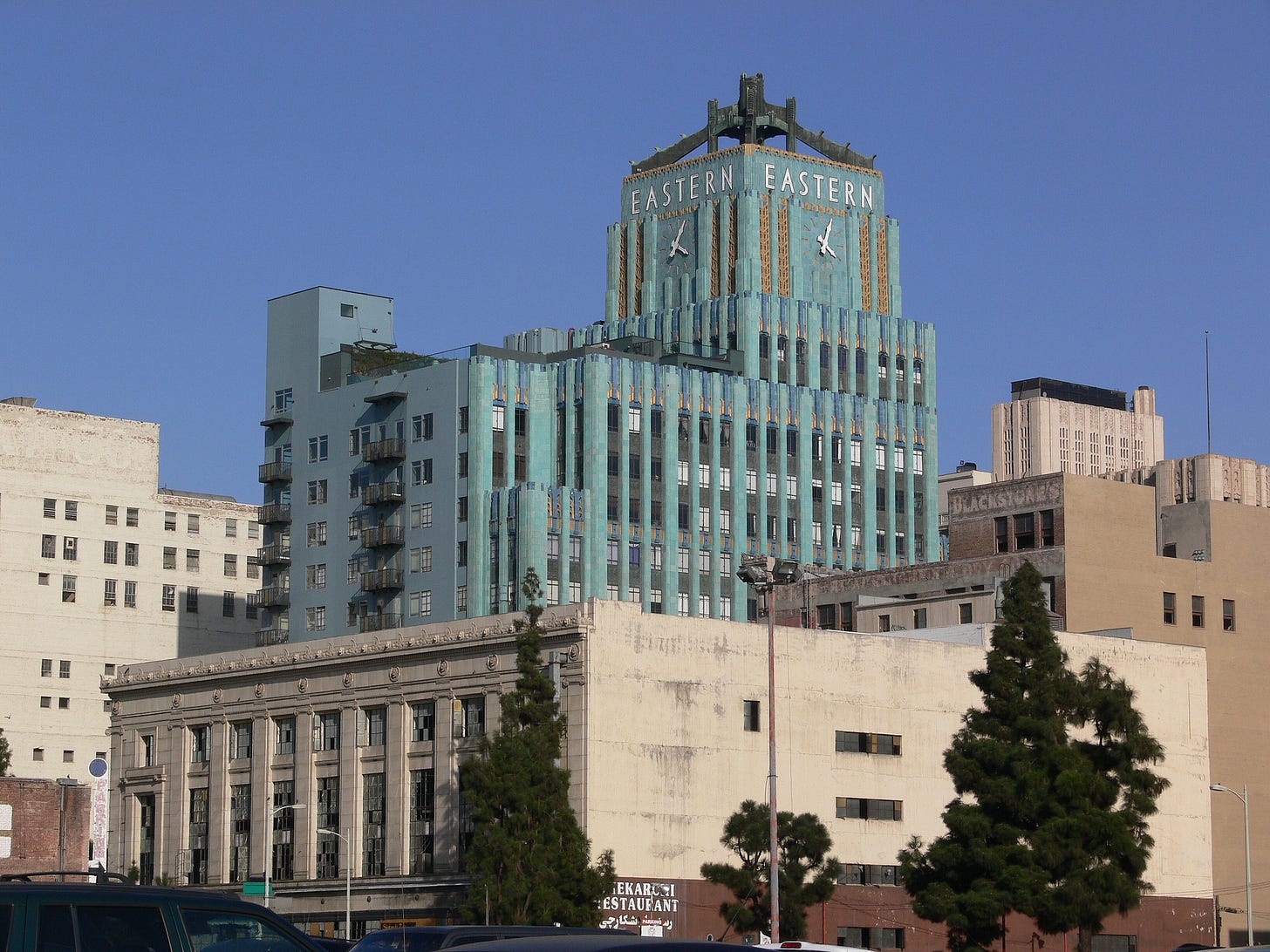Art Deco- 7 less well-known gems
Introduction
“Art Deco" is far more than just bold, highly stylized architecture. It is a comprehensive design movement that emerged from the modernist spirit of the 1920s, influencing everything from fashion to interior design. Let’s explore it further. Here are seven less well-known examples:
Niagara Mohawk Building- Syracuse, New York

One of the charms of great Art Deco architecture is that it graces places beyond the major city skylines — Syracuse, New York, being a perfect example. Built in 1932 as the headquarters for Niagara Mohawk Power, this master work was designed by architect Melvin King. According to the architect’s website:
Melvin King designed the Syracuse Lighting Company building in a consultation with Buffalo firm Bley and Lyman. It became the headquarters of Niagara-Hudson, Niagara-Mohawk, and now National Grid. By 1933, citizens referred to it as “the electric jewel”, this striking design is resplendent with shining Crucible Steel, produced in Solvay. The same steel was used in the Chrysler Building in New York City. Arranged with setbacks, black glass, helium filled lighting tubes, and topped with The Spirit of Light, this building is one of the finest examples of Art Deco design in the United States. In 2009, it was placed on the National Register.
The amazing Spirit of Light is shown below:
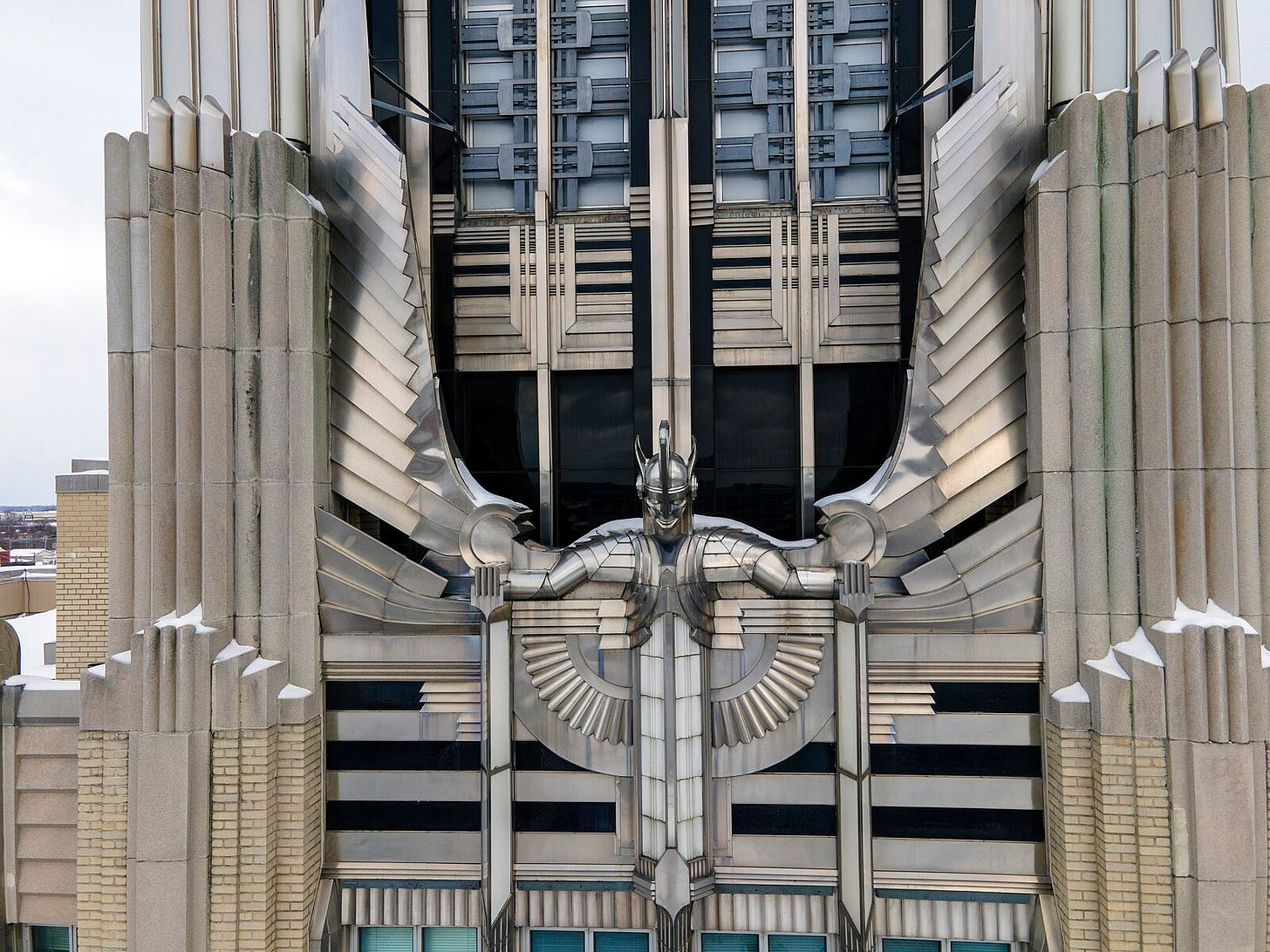
This work perfectly illustrates the influence of Art Deco across geographies and project types. Below is how I recall the building; the snow is a feature burned into my memory.
Carbide & Carbon Building - Chicago, Illinois
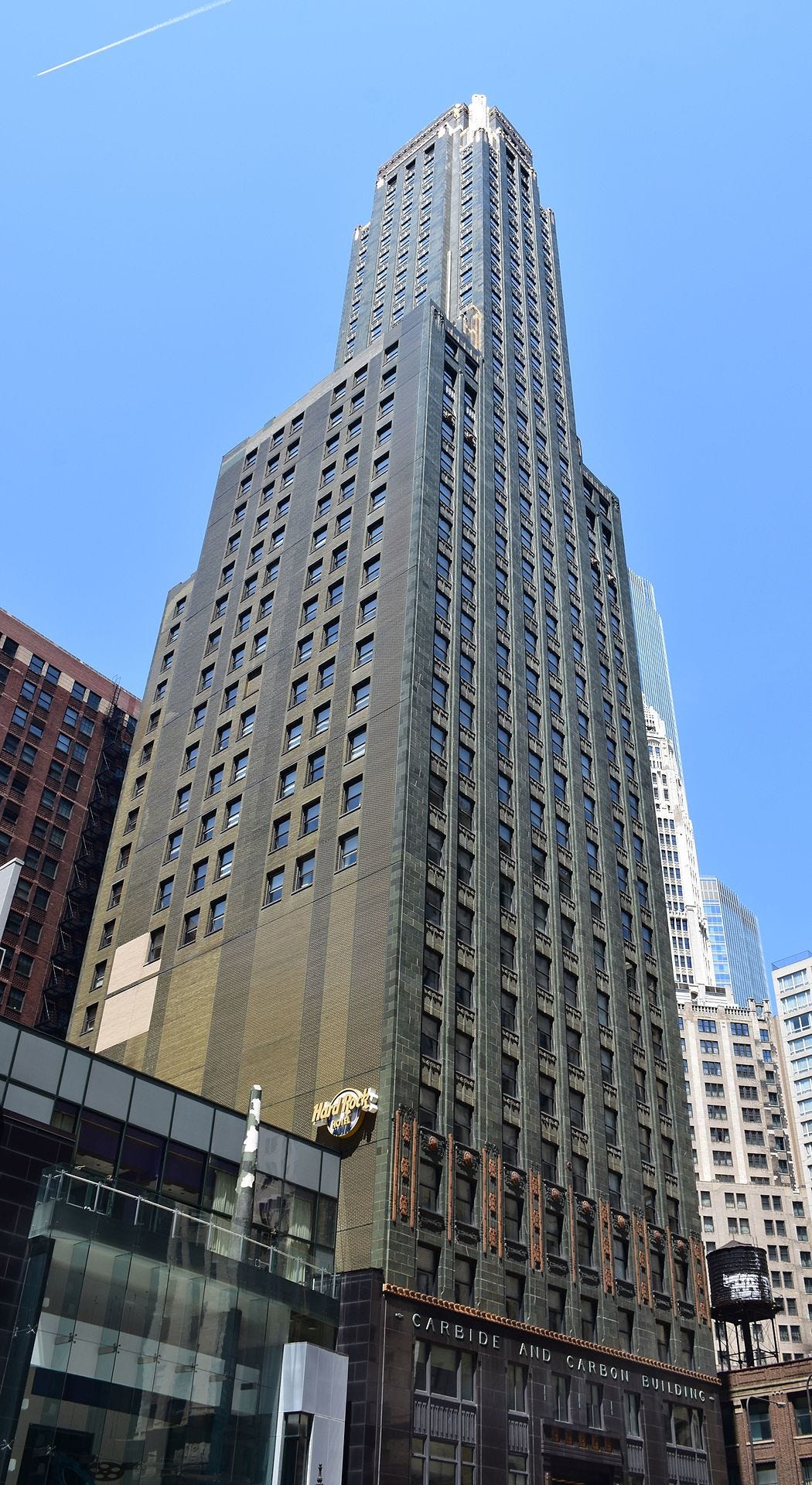
Completed by the Burnham Brothers (the sons of Daniel Burnham) in 1929 for the Union Carbide and Carbon Co. as a major regional office. This work perfectly illustrates a wide range of interesting design elements.
The facade of the building is clad in polished black granite. However, the tower above is deep green terra cotta with gold leaf accents. As shown below:

A true classic of its time, the Carbide and Carbon Building was conceived during Chicago's Jazz Age and Prohibition era. Its bold combination of black granite, green terra cotta, and gold leaf over a steel frame was a striking departure from the more common limestone facades of the period. This daring use of color and material instantly set the building—and the company it housed—apart from its contemporaries. It is well worth a visit when in Chicago.
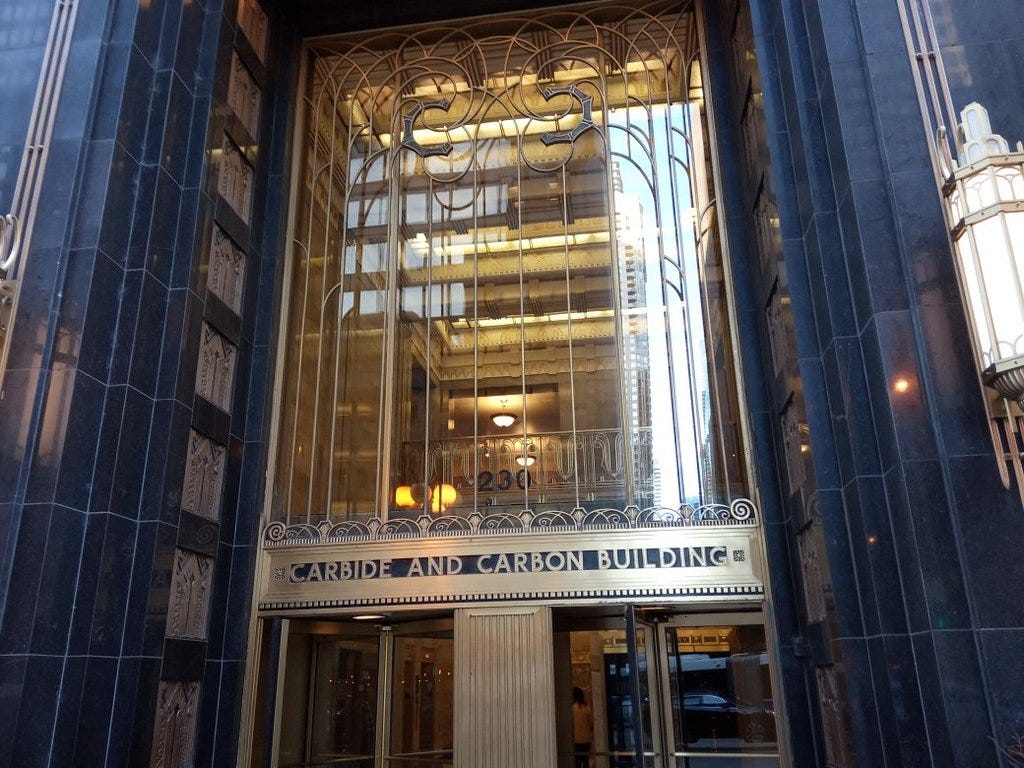
Fisher Building, Detroit, Michigan
According to Dan Austin of HistoricDetroit.org:
The Fisher -- built by the Fisher brothers of “Body by Fisher" fame -- opened in September 1928, at Second Avenue and Grand Boulevard. Once known as the Cathedral to Commerce, the 441-foot tower is decked to the nines in fancy marbles, mosaics, soaring, painted ceilings and a whole lot of brass and bronze. This world of shops, theater, art and architectural beauty is renowned architect Albert Kahn's masterpiece, “a superbly designed complex which displays some of the finest craftsmanship in any Art Deco style building constructed in the U.S. in the 1920s," the National Park Service says.
I have only been here once. However, the lobby left a lasting impression as a veritable shrine to a midwestern style Art Deco. Please click below for a video tour
The Kansas City Power and Light Building
Now lower contribution request. Architecture for the Soul is a reader-supported publication. Please support our work by becoming a paid subscriber.
Built in 1931, during the Art Deco period in America, the Kansas City Power and Light Building was designed by the local architectural firm of Hoit, Price, and Barnes. Time goes by, and the building is now an apartment building. That building’s website provides some historical background:
Kansas City Power and Light spared no expense with the building’s construction, which boasts several signature features: a reinforced concrete structure, an exterior clad in Indiana limestone, a lobby space rich with Art Deco ornamentation, and an impressive canvas of marble and granite for the foyer’s decorative plaster moldings and custom white metalwork.
The area around the original building is now known as the Power and Light District. That same website describes the mixed-use project:
The Kansas City Power & Light District is a vibrant nine-block dining, shopping, office, entertainment and lifestyle neighborhood that since opening in 2008, provides world-class dining, award-winning entertainment, and luxurious services to guests, visitors and residents. The $850 million mixed-use district is one of the largest and most exciting development projects in the Midwest, welcoming more than 95 million visitors over the last decade and helping ignite the revitalization of downtown Kansas City.
Cincinnati Union Terminal
The Cincinnati Union Terminal (as previously discussed here) opened in 1933 and was designed by Fellheimer & Wagner, an architectural firm with a train station design history. Alfred Fellheimer had been the lead architect for Grand Central Terminal in New York when he was with Reed & Stem. A great website, art deco.org, tells the back story of the building design:
The station was originally designed to be a grand neoclassical building with columns and arches. But after two years of construction, the owners asked the architects, Fellheimer & Wagner, to redesign the building in an up-to-date, less expensive style. Fellheimer & Wagner tasked its talented young architect Roland A. Wank, along with the French-born consultant and architect Paul Philippe Cret, to redesign the building in the modern style now known as Art Deco.
Cincinnati Union Terminal was a functioning train station until 1972. Sadly, from 1972 to 1980, significant portions of the unused facility were demolished. Into that vacuum stepped two Cincinnati museums that funded the Cincinnati Museum Center. The restoration of the terminal can best be seen in the video below:
Eastern Columbia Building, Los Angeles, CA.
Completed as a department store for the Eastern Columbia Company in 1930, and designed by Claud Beelman. The legendary four-sided clock tower, with the word "EASTERN" in neon, draws the eye from all points.
The Eastern Columbia building in Los Angeles is hailed as the finest Art Deco work in the city. The first time I saw it, it seemed shockingly out of place on the “left coast,”which was an obvious East Coast bias. my bad!
Claud Beelman designed the building, which was completed in 1930 as a department store for the Eastern Columbia Company. Its iconic four-sided clock tower, crowned with the word 'EASTERN' in neon, captures attention from every direction.
A very interesting website, buildingsdb.com, described the structure:
From an aesthetic point of view, the facade features a glossy terra cotta tiles cladding which gives the building it's iconic image through it's palette of turquoise and other blue-green shades. This rather unique tones brilliantly contrast with the black spandrels and golden accents to create a sense of verticality and one of the most recognizable and admired facades of american art-deco. To complete this iconic image, the building is topped with a four-sided clock tower, where the word "EASTERN" shines in bright white neon above each of the four clocks..
Below is a wonderful drone video of the building:
In conclusion
We have attempted to highlight that great Art Deco buildings exist outside of Manhattan and South Beach. I have personally seen five of these seven and recommend them all for visits. Thanks for reading!
Now lower contribution request.Architecture for the Soul is a reader-supported publication. Please support our work by becoming a paid subscriber.




